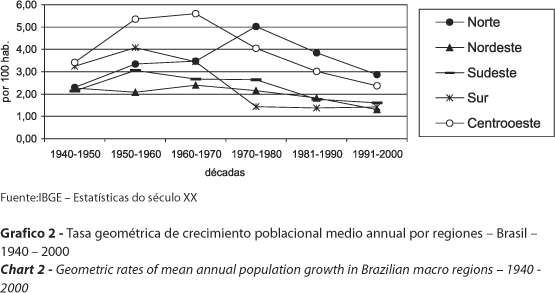The present investigation intends to study the territorial distribution of leprosy in Brazil in order to identify the regularities of its differentiation, and to contribute to the knowledge that allows progress in the understanding of the processes of its social production. Time trends of global and specific leprosy detection rates were calculated for regions and states of the country. A synthesis of the historical-geographical distribution of the endemic in Brazil is shown as substratum of the analysis. The historical series of the 1960-2002 period allows the comparison of detection rates for regions, in which the first decade presents the lowest detection rates, except for the North region that stands out with the highest detection rate. Detection grew for all regions as of the 1970's, with the lowest detection in the South region. The North and Center West regions, maintained the highest detections of cases and the largest increments, which is an evidence of the unequal regional development of the endemic in the country. The historical stability in the high incidence of leprosy in the entire North region, in the states of Maranhão and Pernambuco in the Northeast region, and in the state of Parana in the South region, as well as the low incidence of leprosy in the other two states of the South region suggests the existence of geographical contexts with different vulnerability to the social production of leprosy, and new components in the organization of space in some territories.
Leprosy; Detection rate; Time trends; Space differentiation; Social production


